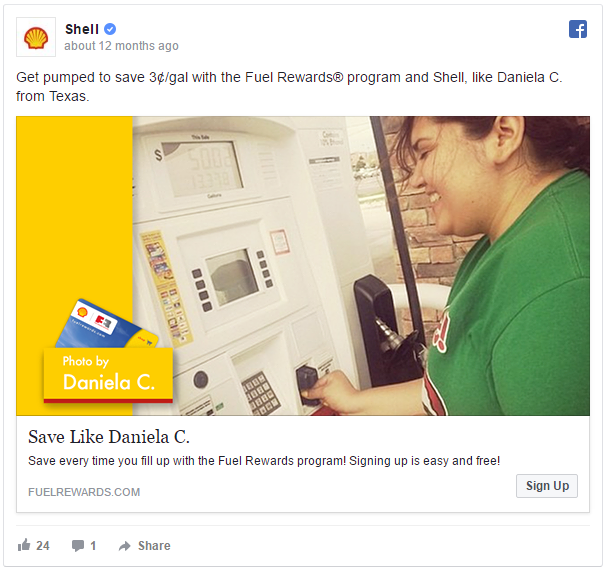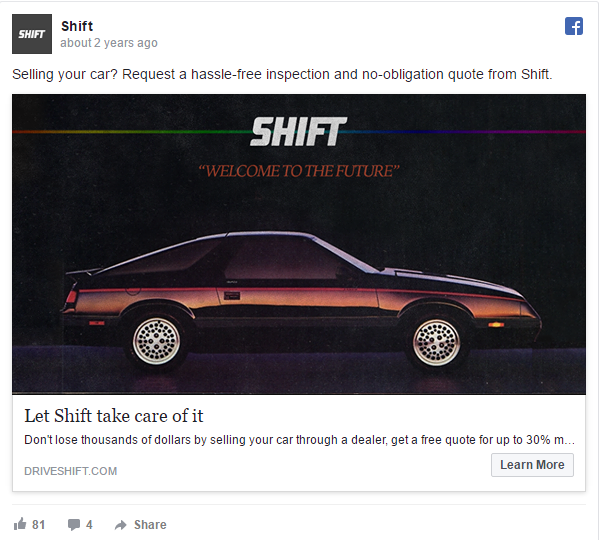It’s really no surprise that Facebook’s ad revenue grew by a massive 57% in 2016. They achieved $26-billion in total revenue, up from $17-billion in 2015, with 84% of that coming from mobile advertising.
Paid Facebook ads are one of the most important tools in my marketing arsenal, as well as many other industry professionals and SMEs. The platform has gone from strength to strength, providing businesses an opportunity to reach very specific audiences from as little as $5 per day, with easily measurable results.
Yet, just like other paid traffic channels, the platform can end up being a money pit if you don’t know what you’re doing. In this article, i’ll discuss a few tips, tricks, and things to think about to give your campaigns the best chance of success. Let’s go!
Consider Your Offer
When you’re advertising on Facebook, it’s important to understand that your audience is not seeking your product or service. Most people are there to interact with friends & family, watch cat videos, and share memes. Your advert is interrupting that, so you’d better have a compelling offer!
Compare this to SEO or AdWords, where somebody has typed in exactly what they are looking for. If I search “plumber New York” on Google, there’s a pretty good chance I need a plumber in New York. This allows you to have a more aggressive call-to-action (CTA) on your landing page (e.g. free quotations, enquire now, etc.), and still expect good results.
With Facebook Ads targeted at cold traffic—people who’ve never interacted with your brand before—you have to be less threatening. Expect that people won’t—yet—trust you, and expect that people won’t go to great lengths for you either. Make it easy for them. Grab and keep their attention.

^ “PPC Threat Intent Scale” by Klientboost
Here are some examples of what you might offer to a cold traffic audience:
- Interesting, niche-relevant content – videos, podcasts, articles, infographics
- Free online courses, guides, or checklists
- An irresistible discount

While later on, with traffic that is more familiar with your brand, you can start to change it up and push people further along your funnel. Warmer traffic might come from retargeting website visitors or video views, Facebook page engagement, or perhaps an email list. In these cases, you may think about promoting things like:
- A free trial or demo for software
- Case studies showcasing your skills & results
- Free webinar sign-ups

And if they’re really hot prospects—they know your brand well, and/or have purchased from you before:
- Free quotation or consultation
- Buy now
- Sign up for paid courses/webinars

Get Your Audiences Spot On
You could have the best ad copy, design, & offer in the world, but if your audience targeting isn’t spot on, your results won’t be either. Here, we’ll discuss both interest-based targeting options & custom audiences.
Interests: The Nobody-Else-But-Them Approach
Rolls off the tongue, right?
Try to think of targeting options that nobody other than your target audience would know about. If you are trying to reach an audience that are interested in tennis, do not only target ‘tennis’ as an interest.
Furthermore, do not only use the most popular athletes e.g. Roger Federer because a) lots of people will have heard of him and followed him regardless of whether they’re interested in tennis, and b) it’s too easy—lots of other advertisers will be using this too, therefore driving costs up.
Try digging a bit deeper and using less-known athletes that only a tennis fanatic would be following on social media. For demonstration purposes, I’ve picked out Nick Kyrgios; there are still over 1-million people in that audience, and it really narrows it down from the 12-million plus you get using Federer.


Custom Audiences
Other than interests, there is a huge amount of custom audiences that you can use for advertising. I will highlight a few commonly used options & examples of when they could be used.
People who have engaged with a post or advert. Here, you can be confident that the majority of your audience knows what your brand is all about. Instead of talking about what your product or service is, you can skip straight to benefits, case studies, discounts and so on.
People who have viewed a video. Video views will often come at a fraction of what a click would cost. Using video as a first point of contact can be a cost-effective way to qualify an interested audience for retargeting later in your funnel.
People who have opened or completed a lead form. If you are using lead generation adverts, this can be a useful custom audience too. For example… one of the disadvantages of using lead forms is that Facebook’s automatic populating of fields can sometimes lead to errors and incorrect information. Since you can track those clicks and put everybody who has simply opened the form into an audience, that problem is mitigated.
People who have visited your site. Similar to page engagements, you know that this audience has encountered your brand before, and likely knows what you’re all about. If you are a software provider, perhaps you would set up a retargeting ad that offers a free trial to everybody that visited the ‘Pricing’ page.
Remember, you can also exclude people based on which pages they’ve visited, too—so you can avoid advertising to people who have already been on your ‘Thank You’ page.
Bonus tip: check out which audiences other advertisers are using. When you see an advert in your news feed, there’s a little arrow in the top-right corner which opens up a menu as shown below. Click ‘Why am I seeing this?’ for (limited) insights into the advertisers’ targeting settings.


AdEspresso have a more in-depth article on how to spy on competitors’ targeting too.
Think Ahead – How Will You Get an ROI?
If you’re going straight for purchases, this one might seem a bit redundant. However, earlier in the article we discussed how it is often good practice to offer freebies at the top of your funnel, such as videos, guides, eBooks, and so on.
Now, obviously, they are not going to turn you an immediate ROI on your ad spend, so we have to think ahead: build a funnel, implement systems and processes that will carry a person from their first interaction with your brand all the way through to being a loyal customer.
The purpose of that initial point of contact might be:
- Collect email addresses. Will you follow up with an automated email sequence over the next X number of days? Push more quality content, case studies and finally offer a free consultation?
- ‘Pixel’ users for retargeting offers. If a user clicked on your article about the health benefits of green tea, maybe you would build an audience of those readers to offer a discount on green tea.
- Generate page likes – can be viable, but only if you have a solid & consistent organic social media strategy in place. With good organic engagement, you’ll be able to market to a page liker repeatedly.
It goes beyond the scope of this article to go in-depth about closing sales & lead nurturing strategies, but the bottom line is that if you don’t get these follow-ups right, your chances of turning an ROI on your Facebook Ads campaign will be slim.
That’s a wrap! I hope you found value in this article. Let us know in the comments or on social media what your biggest challenges are with Facebook advertising, or indeed what your greatest successes have been!
Opinions expressed here are opinions of the Author. Influencive does not endorse or review brands mentioned; does not and cannot investigate relationships with brands, products, and people mentioned and is up to the Author to disclose. Accounts and articles may be professional fee-based.

